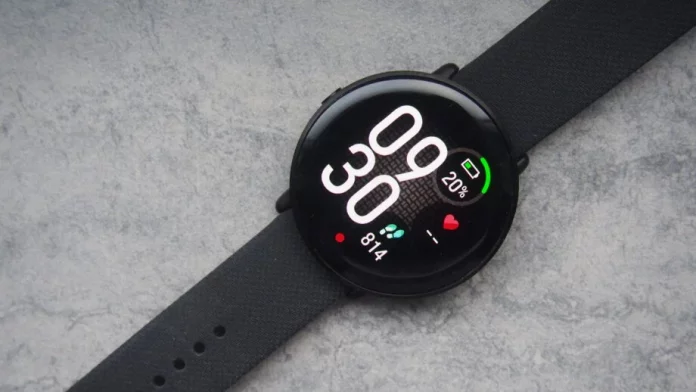The Polar Ignite 3 is the first Polar watch to include an AMOLED screen, which is a welcome change from the brand’s usual monochrome displays.
The watch also boasts a smart combination of fitness functions in a lightweight design that made me sit up and take notice, despite having already used multiple Polar trackers.
However, the software on the Ignite 3 is so simple and sluggish that it is difficult to recommend. Add to that the fact that it’s more costly than the Apple Watch SE at $329.95/£289/€329.90, and Polar is fighting a losing battle with the casual, fashion-conscious shopper it’s attempting to target here.
However, you may prefer the features of the Polar over those of the Apple Watch. It adds to the Ignite 3’s shortcomings because this might have been a fantastic exercise watch.
Design & build
- Very lightweight
- Nice AMOLED screen
- Four colour options
The Polar Ignite 3 is a straightforward watch with a circular touchscreen and only one button on the left side for opening and closing menus or pausing and ending exercises.
It is available in black, sand, purple, or brown copper. All of them, weirdly, have varied casing finishes with grooves, lattice, smooth, and scored, so be sure to see which one you want.
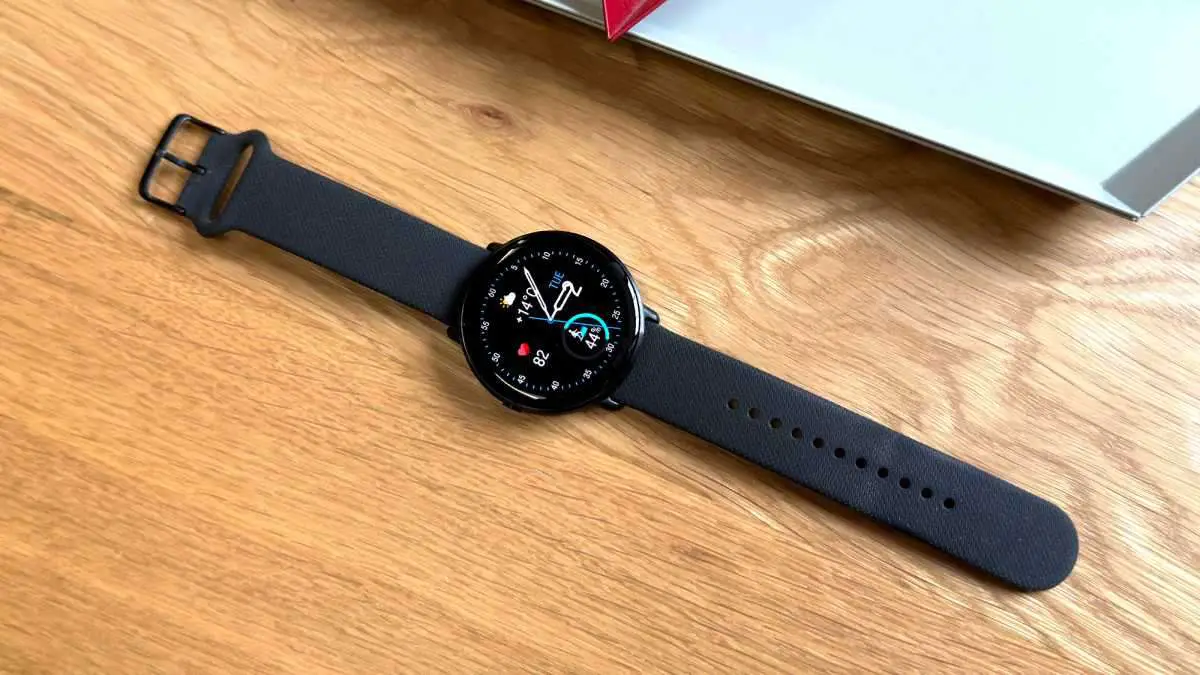
All of the straps are silicone, with a classic buckle and a loop to tuck the end of the strap into while wearing. They are smooth on the inside but have a patterned texture on the exterior that I despise since it feels abrasive and gathers dust and (sorry) skin bits, making them appear unclean.
They are 20mm in size and are simple to replace if you wish to use different ones from Polar’s web store. I looked at the black model, which is really simple yet the greatest option for a discreet style.
The Ignite 3 is amazingly lightweight and is only 35g with the strap
The Ignite 3 is incredibly light, weighing only 35g with the strap. This is really amazing given the watch’s heart rate sensor and built-in GPS, and it’s one of the major reasons to buy it – it’s the most comfortable watch I’ve worn to bed for sleep monitoring, when other, larger smartwatches are a hassle (literally). It is unquestionably one of the thinnest GPS watches available.

The featherlike sensation is due to the watch’s 1.2in display, which is tiny but large enough to check the time and stats when out and about monitoring walks and runs.
It is also waterproof to a depth of 30 meters.
Performance & software
- Frustratingly laggy
- No mobile payments
- Simple tile-based information
I’ve evaluated various Polar watches before this one, but the Ignite 3 is more aggravating. Though the AMOLED touchscreen on the Ignite seems more luxurious than the monochrome memory in pixel (MIP) screen on the Polar Pacer, the absence of buttons and sluggish software make the Ignite difficult to use.
Whereas the Pacer and other Polar watches include buttons to swiftly cycle through Polar’s software menus in the absence of a touchscreen, the Ignite 3 requires touch. However, the watch’s low-powered internals can’t keep up, resulting in a highly sluggish and laggy experience that, simply, destroys everything.
Even swiping up to read notifications causes stuttering, and I dislike that you can’t wake up the screen by touching it. To wake up, lift the watch or touch the side button.

When combined with the fact that there is no complete always-on display option, this increases the irritation when exercising. So, while jogging, you have to lift the watch to your face to see your time, pace, and other useful metrics, but the watch either doesn’t notice or is slow to turn on the screen.
In comparison to other running watches that either continuously display metrics or are responsive, the Ignite 3 is tiresome to use since it cannot keep up with my most basic requests.
…the lack of buttons and laggy software make the Ignite frustrating to interact with
It only has a 192MHz CPU and 5MB of RAM, which is sufficient for watches with lesser resolution displays but insufficient for the Ignite’s dazzling AMOLED.
The scrolling left and right of the clock face is very smooth, and it cycles among full-screen tiles of activity, weather, sleep, and other features, including a ‘today’s recommendation’ panel.
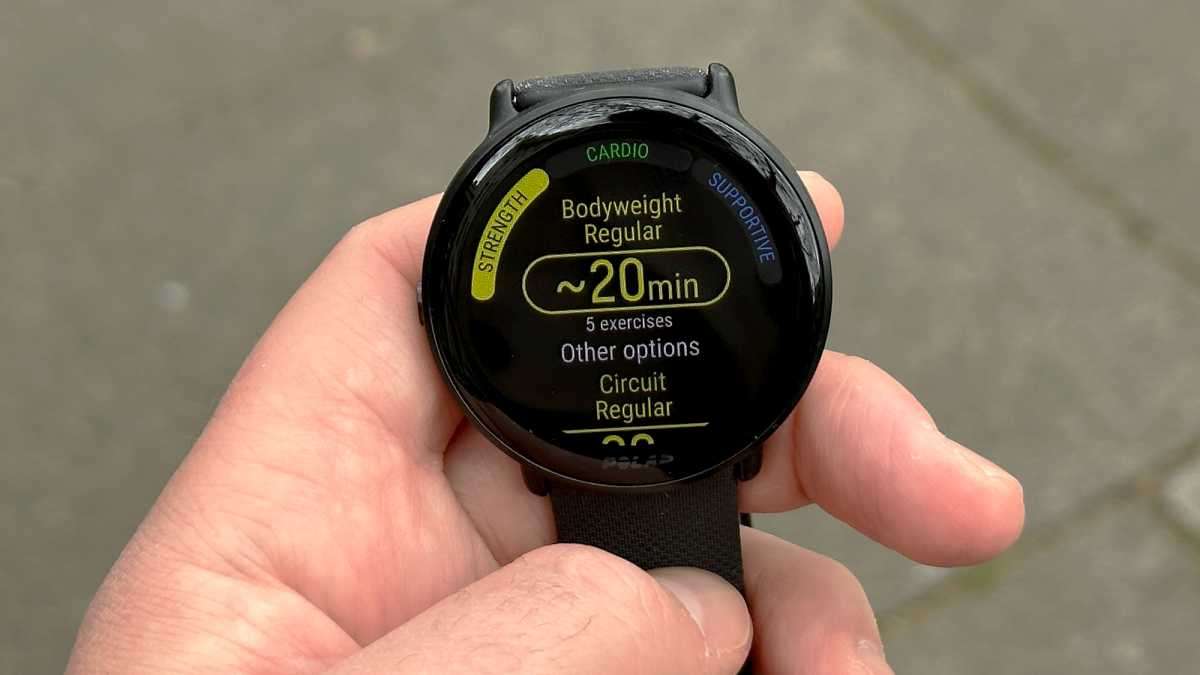
You can get smartphone alerts to ping the watch, but they are quite rudimentary and cannot be used to engage with or react to messages, for example.
When you play music or a podcast, audio controls display on the watch so you can manage what you’re listening to from the watch, but just as a phone remote – you can’t load records onto the watch itself. If you run to audio, you must always bring your phone with you.
To manually sync your newest data with your phone, you must hold down the button, like with any Polar watch. This continues to irritate me, and I’m not sure why Polar can’t get automatic sync to function like the majority of other manufacturers.
Furthermore, because Polar is attempting to cater directly to a more fashion or lifestyle oriented customer with the Ignite 3, the lack of any type of mobile payment option is more noticeable than on the company’s more serious training gadgets.
You can get smartphone notifications to ping the watch but they are very basic and you can’t interact with them
Health and fitness tracking
- Slightly wonky GPS tracking
- Several workout modes
- Detailed sleep stage tracking
The Ignite 3 does not function as a smartwatch. It’s a fitness tracker with GPS tracking and a decent collection of wellness functions, as well as attractive extras like customizable watch faces.
It can monitor particular activities such as running, walking, cycling, HIIT sessions, swimming, indoor cycling, treadmill running, strength training, hiking, and mountain riding, but you can also pick general indoor or outdoor activity if what you’re doing isn’t included. This will still guarantee that your heart rate and GPS movements are logged, allowing you to register that workout.
Over the course of many weeks, I used the watch as my daily watch as well as to track walks, long excursions, and runs. Aside from the performance difficulties I stated, the Ignite 3 performs admirably in terms of tracking. However, when I zoomed in on the GPS trail overlay for several of my runs, the path cut corners, implying that I ran over greens that I did not, or that I got the ability to run through walls.
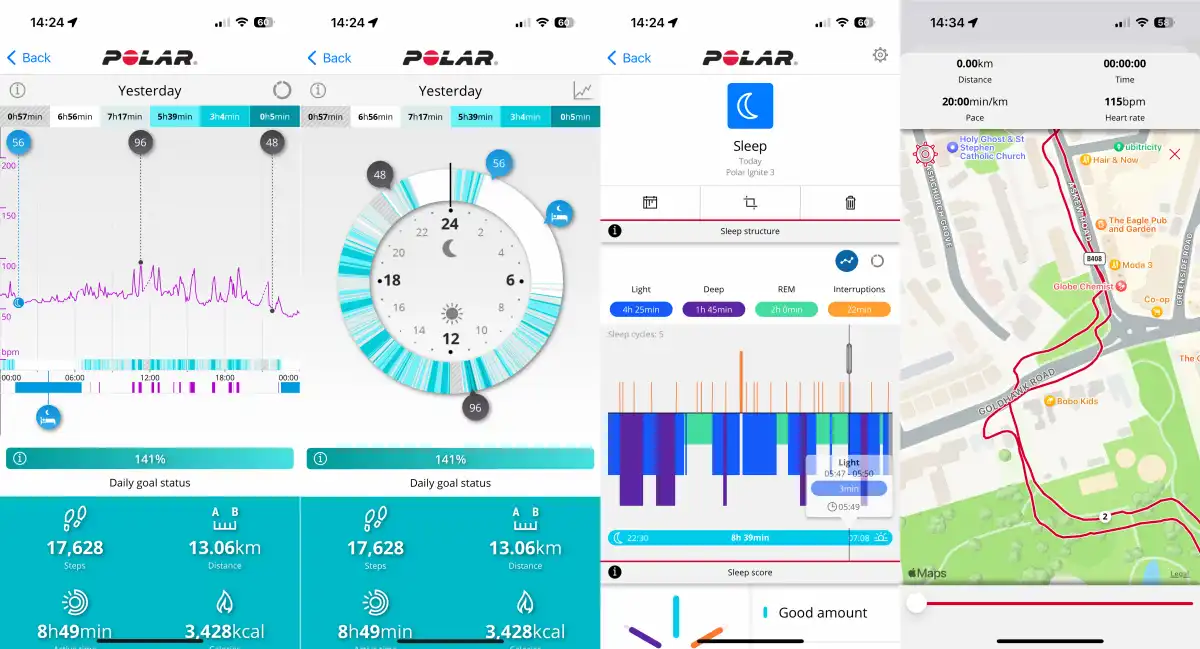
I don’t have that power, as much as I wish I had. In my tests, the Apple Watch SE and Polar Pacer (both less expensive than the Ignite 3) performed better. It’s a bummer, especially because the Polar features dual-band GPS, which is said to be more precise.
The Polar Flow app, which you sync the watch with on Android or iOS, has a small learning curve because it isn’t the most intuitive app, but when viewing your workouts, you can get a solid granular view of data such as heart rate and zones, pace by distance, elevation change, calories burned, and a full GPS map with distance markers.
The GPS worked well for me, and it seldom, if ever, disconnected. Looking at the results in Polar Flow, I trust the Ignite 3 to correctly measure what I’m doing, which contributes to my desire to continue wearing it and believing the data it provides.
Aside from the performance issues … the Ignite 3 does a good job with the actual tracking
The app and watch grow increasingly beneficial to you as you workout. Although most details are easier to see on the app, tapping the ‘today’s recommendation’ tile provides you advised training for the day based on your recent workout loads and sleep quality.
Polar’s provision of no-subscription basic training programs based on use statistics is fantastic, and superior to equivalent Fitbit capabilities, which need a Fitbit Premium paid subscription to get similar coaching advantages.
When working out, you can also obtain optional voice instruction, however because the watch has no speaker, this is only heard through your phone’s speaker or Bluetooth headphones linked to your phone. It’s fairly convenient once you have it set up since you can be directed through training sessions without having to glance at your phone or watch, but it’s simply based on heart rate zones rather than particular workout activities – so no run coaching, for example, just general effort.
There are also applications that can assist, such as Serene, which walks you through breathing exercises to promote awareness. Timers and Tests, which measure your baseline walking, running, and fitness levels.
Polar’s sleep tracking is fantastic. Wear the Ignite to bed, and it’ll offer you a detailed breakdown of how well you slept, telling you if it was ‘VERY POOR’ or something a bit better. There’s also a nice breakdown of sleep stages, predicting when you were in light, deep, or REM sleep and whether or not you were awakened.
Wear the Ignite to bed, and it’ll give you a solid summary of how well you slept
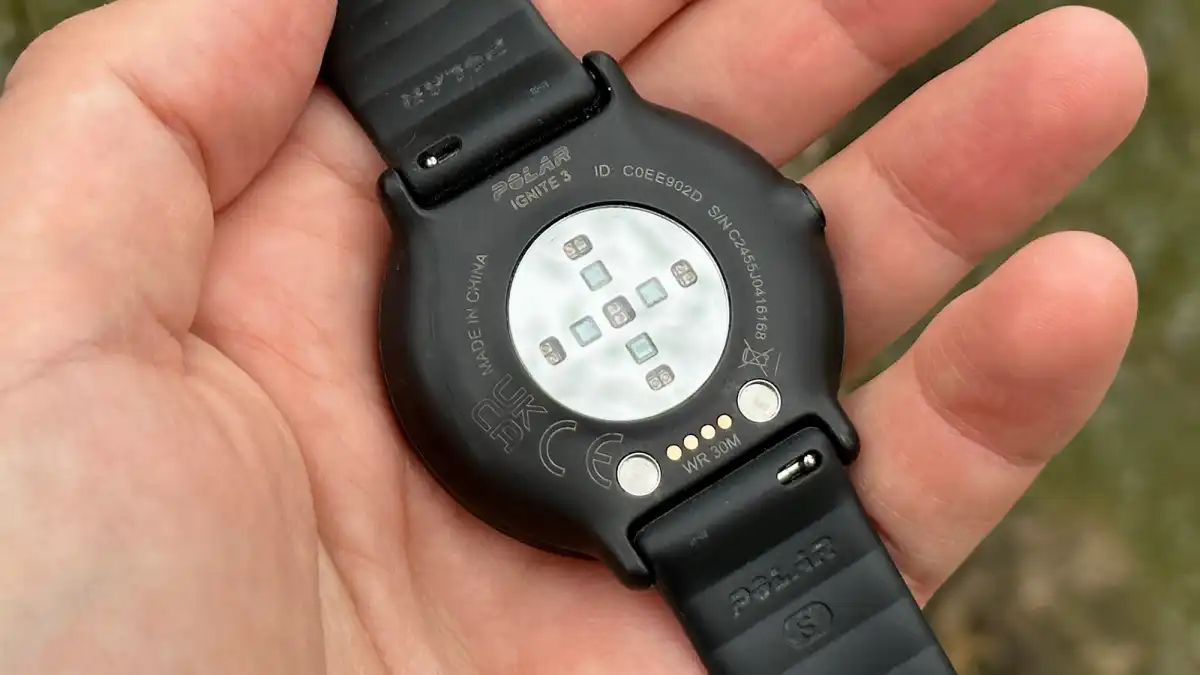
Battery life & charging
- Multi-day battery life
- Proprietary charge cable
- No wall plug in box
The battery life of the Ignite 3 is adequate. I had to charge it every four days or so, which generally included one or two 30-minute exercises. Using the GPS for outdoor activities can drain the battery faster, but in my experience, the watch will last at least three days.
The battery life was first unpredictable but stabilized after a few weeks. It drains little at night, which is to be anticipated given that it monitors heart rate and activity. It’s even more bothersome because it drained at the same rate even when I wasn’t wearing it.
It charges via the provided USB-A proprietary cable, which hooks into the rear of the device. There is no wall plug in the package, but you may charge it with an existing charger or with a computer’s USB-A connection.
Price & availability
The Polar Ignite 3 costs $329.95/£289/€329.90 when purchased directly from Polar.
The Polar Pacer includes much of the same features at $199.95/£169.50/€199.90, albeit it lacks the AMOLED screen of the Ignite 3.
The Apple Watch 9 is a formidable rival and a better purchase for its asking price of $249/£259/€299 and significantly stronger smartwatch functionality, but the battery only lasts a day. If you have a bit more money to invest, you might also consider the $449/£399 Garmin Venu 2 Plus if you want a decent blend of fitness and smartwatch.
Verdict
The Polar Ignite 3 is a small and powerful GPS fitness gadget for those who want a less strenuous workout. It has a wonderful lightweight design, an appealing AMOLED display, and a good multi-day battery life.
However, the software is so sluggish that it spoils the entire experience of using the watch on a regular basis. It may be unresponsive and plain irritating to use, with daily annoyances such as the screen taking a long time to wake up when you lift your arm to check the time or your workout. At this pricing and with OLED technology, the lack of a completely always-on display is also disappointing.
It’s a fantastic option if you want one of the slimmest fitness watches with GPS and don’t mind not having to charge it every day, but there are cheaper choices available.
Specs
- 1.2in 416×416 AMOLED touchscreen
- Gorilla Glass
- 192MHz CPU
- 5MB RAM
- 32MB storage
- Polar’s OS
- GPS
- Glonass
- Galieo
- QZSS
- Bluetooth 5.1


